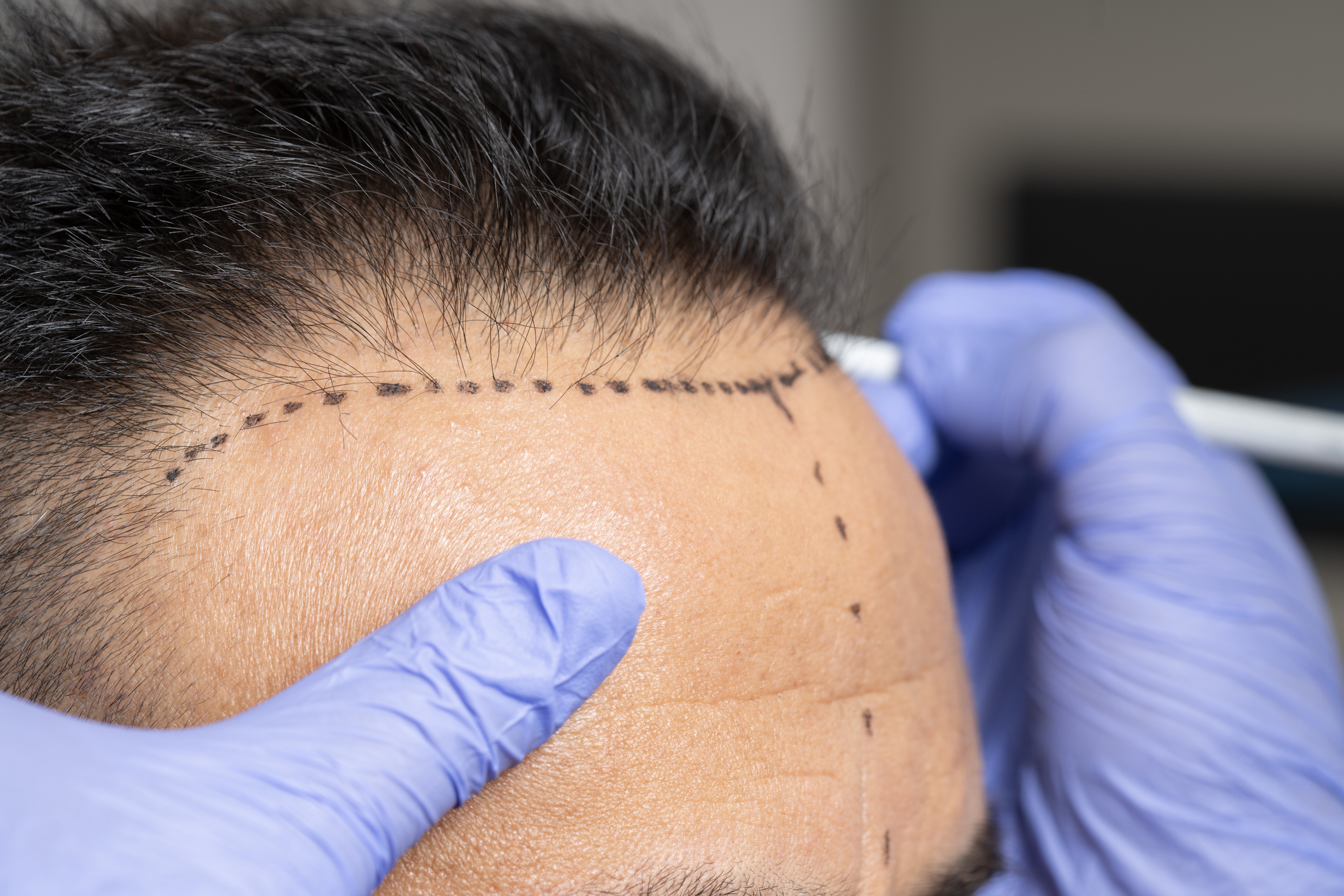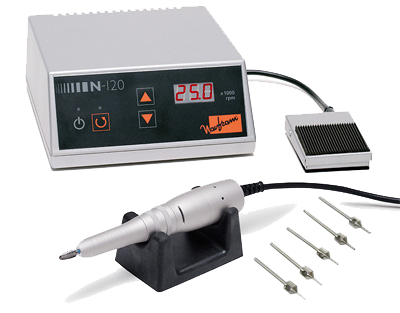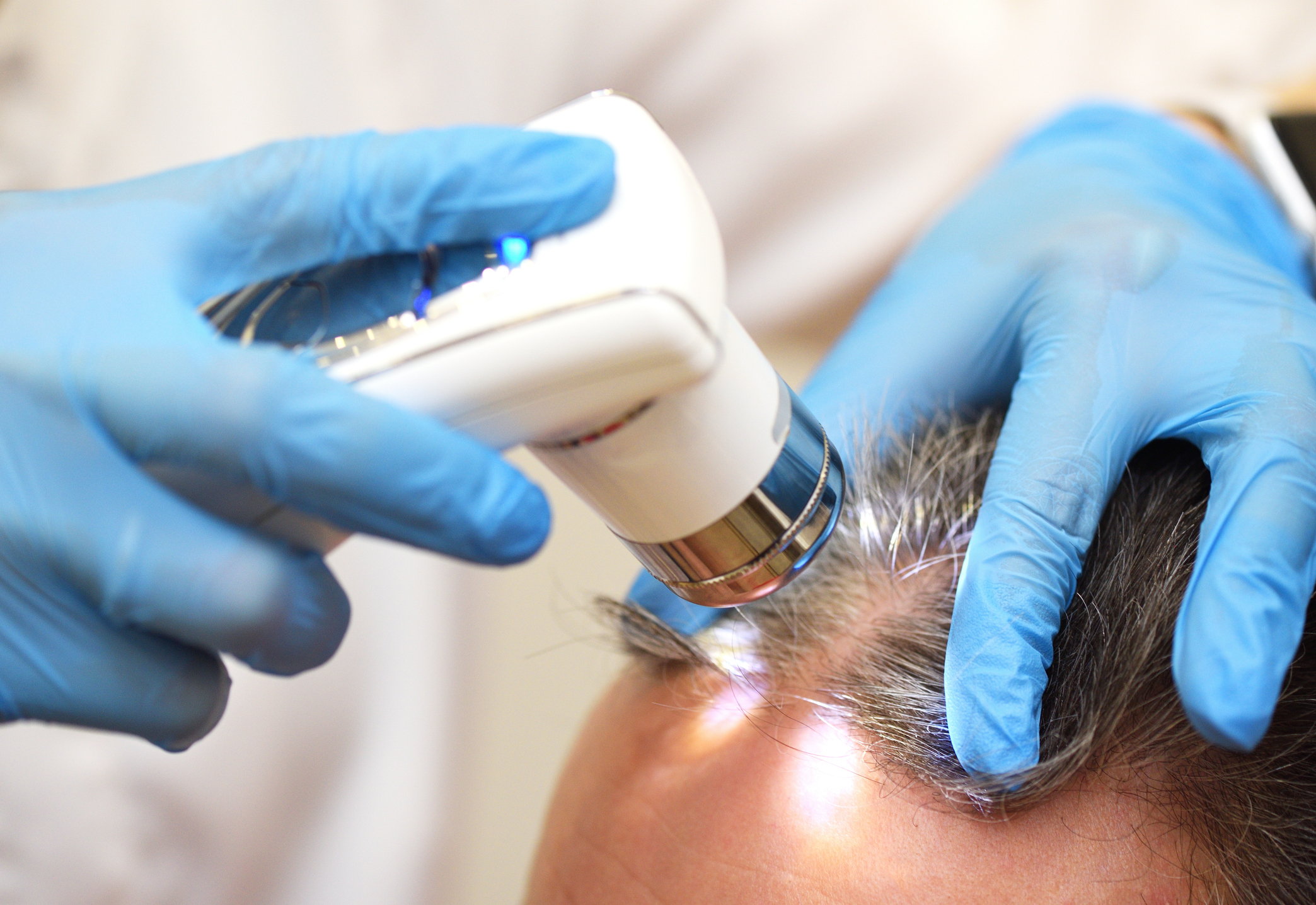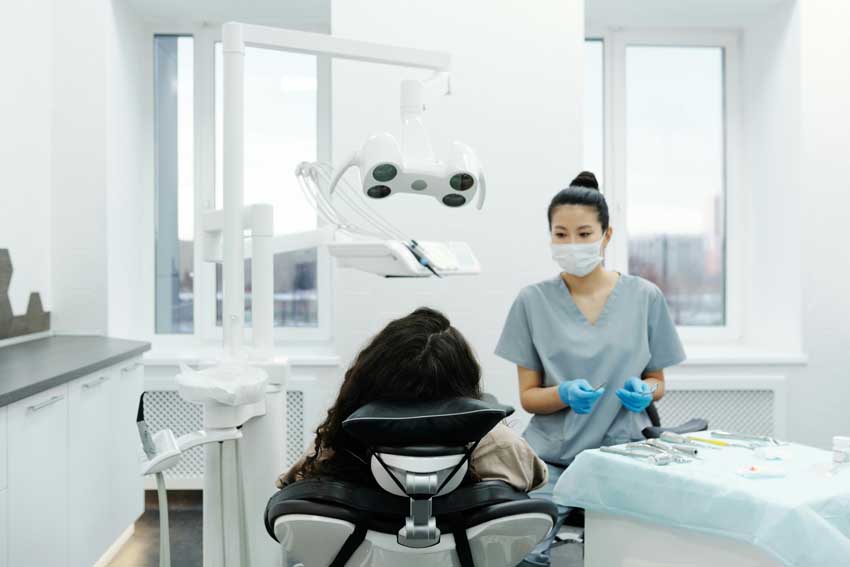Saç Ekimi
Book your appointment
Reserve your free consultation with our health team in minutes.

As a team, we use the micro FUE (Follicular Unit Extraction) method to harvest grafts from donor areas during our hair transplant operations. A graft refers to a piece of transplanted tissue, specifically containing hair follicles in hair transplant procedures. We implant these grafts into bald areas using the DHI (Direct Hair Implantation) method. We believe that micro FUE for harvesting and DHI for implantation are the best options for hair transplantation.
FUE and DHI Methods
FUE (Follicular Unit Extraction)
Hair follicles that form our hair are found not individually but in groups called follicular units. In the FUE method, the donor areas are the nape and the sides of the head. Follicular units in these areas are extracted using hollow needles (punch) attached to a micro motor, which cut the scalp in a circular shape. Hair follicles lie about 4-5 mm beneath the skin surface, allowing easy removal without damaging the follicles.

FUE (Follicular Unit Extraction)
In the front hairline, follicular units typically contain one or two follicles. Moving backward, three-follicle units become more common. In the nape and sides of the head, follicular units often contain three, four, or five follicles. Using fine needles, 1 to 3 follicles are extracted from these groups based on the number of follicles in each unit. Since enough follicles are left behind in the donor area, no visible scarring occurs.
When needles between 0.6–0.8 mm in diameter are used, this is called micro FUE. Smaller grafts harvested with fine-tipped punches allow hair transplantation with desired density and natural appearance. For a natural look, the transplant should mimic the distribution of lost hair: single grafts are used at the front hairline, singles and doubles in the area just behind, and doubles, triples, and quadruples further back.
The micro FUE method is sometimes branded as 3M FUE, FUE Plus, or similar names to highlight slight variations, but there is no real difference between these techniques.
FUE (Follicular Unit Extraction)
In general:
- Using a 0.60–0.65 mm punch, mostly single and double follicle grafts are harvested, with a few containing three follicles (used for the front hairline, front area, as well as mustache, beard, and eyebrow transplants).
- With a 0.70–0.75 mm punch, mostly double and triple follicle grafts are taken, along with some single and quadruple follicle grafts (suitable for graft harvesting in all areas of the scalp).
- A 0.80 mm punch is used to harvest mostly triple follicle grafts, some quadruple, and a few with five follicles (typically used for graft harvesting in the mid-scalp and crown areas).

Book an appointment
Take the first step toward natural hair today.

FUE and DHI Methods
DHI (Direct Hair Implantation)
In the DHI method, grafts harvested using the FUE technique are placed inside the needle of the implanter pen. The implanter pen is inserted into the bald scalp, and as the needle is withdrawn, the graft remains in the created channel. This allows the graft to be placed simultaneously as the channel is made, without damage. Since the graft fits perfectly with the channel, no clot forms between the skin and graft, improving nourishment. This maximizes the graft’s survival chances. Additionally, the graft is implanted at the precise angle and direction desired.
DHI (Direct Hair Implantation)
In surgeries where the implanter pen is not used, the channels for graft placement must be prepared in advance using a sharp tool. Afterward, grafts are inserted into these channels. If the channels are made too small, grafts can be crushed and damaged during placement. If the channels are too large, excessive bleeding occurs. Clots forming inside the channels can disrupt graft nourishment. Fewer channels can be opened per square centimeter, making dense hair transplantation difficult. Using grafts with many follicles to achieve density may result in an unnatural look. Grafts may not stay at the desired angle and direction, and scarring can be more noticeable.
Hair transplantation using the Micro FUE + DHI method achieves a very natural appearance. It also delivers excellent results in beard, mustache, eyebrow transplants, and operations to remove scars and burn marks on the scalp. Additionally, it allows hair transplantation without cutting all hair short for patients whose donor area hair is long enough to cover it.

DHI (Direct Hair Implantation)
Humans have approximately 150–200 hair strands per square centimeter. If you have a sufficient donor area, we can fully restore your hair to its original state. For this, 70–100 grafts containing 1–2 follicles are used in the hairline and front area. In the mid-scalp, 60–80 grafts with more follicles are applied. At the crown, 50–60 grafts containing 2–3 follicles provide similar density. Simply put, more grafts with fewer follicles are used in the front for a natural look, while fewer grafts with more follicles are used in the back to better cover imperfections.
For those with significant hair loss, there is a limit to the number of grafts that can be taken from the donor area. For individuals with average hair thickness, the donor area should not be thinned by more than 40%. The human eye cannot easily distinguish hair density differences between 60% and 100%. However, if hair count decreases by more than 40%, bald spots may appear in the donor area.
DHI (Direct Hair Implantation)
In cases where the donor area is insufficient, careful planning is essential. Even at 60% density, good results can be achieved when necessary. Hair transplantation can be done with as few as 50 grafts in the front, 40 in the mid-scalp, and 30 in the crown. Therefore, proper planning is crucial. In such cases, the front areas are usually transplanted more densely, while the back areas are less dense, aiming for a minimum of 60% hair density.
Additionally, hair characteristics also affect the outcome: thickness, curliness, and color all influence appearance. Thick, curly, and light-colored hair better camouflages baldness.


FUE and DHI (Direct Hair Implantation) methods
FUE and DHI methods are modern hair transplantation techniques that complement each other in terms of follicle extraction and implantation, offering natural results and fast recovery.

Things to Consider Before Hair Transplantation
Before a hair transplant, it is important to eat healthily, quit smoking and alcohol, inform your doctor about any medications, and follow the doctor’s recommended preparations.

Things to Consider After Hair Transplantation
After a hair transplant, it is important to be careful during recovery, follow the given instructions, and protect the treated area.



